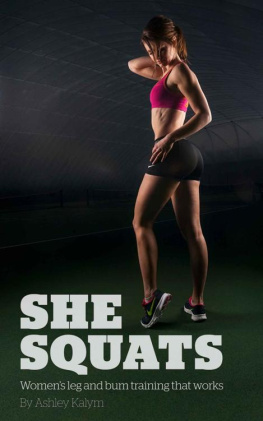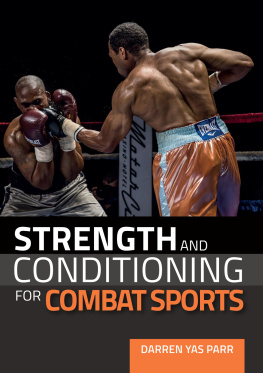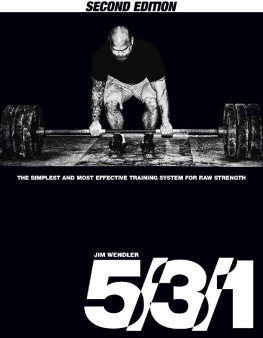Note of Rights: All rights reserved. No part of this book may be reproduced or transmitted in any form by any means, electronic, mechanical, photocopying, recording, otherwise, without the prior written permission of the author. jimnapie r @sbcglobal.net.
Notice of Liability: The information in this book is distributed on an as is basis, without warranty. While every precaution has been taken in the preparations of the book, the author shall not be held liable to any person or entity with respect to any loss or damage caused or alleged to be caused directly or indirectly by the instructions contained in this book.
Jim Napier graduated from Arlington Heights High School in 1963. Was captain of the track team and placed second at the Texas HS State Meet in the Discus in 1963. Attended Howard County Junior College on an athletic scholarship and placed second in the Junior College Nationals in the discus in 1964 and 1965. Attended TCU on an athletic scholarship. Received a degree in Physical Education in 1968, taking courses in (physics, statistics, biology, kinesiology and Anatomy).
Jim was National Weightlifting Champion in 1977 in the 82.5 kg class and placed second at Nationals in 1975, 1976 and 1978. Set four American records in the snatch, including a Pan American Record snatch of 140 kg in the 75 kg class, American Record snatch 142.5 in the 75 kg class in 1978, and National record snatch of 155 kg in the 82.5 kg class in 1979. Set National and World Record in Masters Division.
Jim has been a member of Spoon Barbell Club Weightlifting Team since 1974 and inducted into Texas Weightlifting Hall of Fame 2009.
Chapter 1
Introduction
The purpose of training is to improve the performance of the athlete. Without doing any training, this leaves the athlete with only performing their event during competitions. In the distant past, this may have been the case, and just the very gifted athletes who could perform proficiently without any training would finish on top. Over the decades, since the first modern-era Olympics of 1896, training has evolved into a cottage industry of its own. In the beginning, training was more about exercises called calisthenics.
Calisthenics exercises consist of a variety of gross motor movementsrunning standing, grasping, pushing, etc., often performed rhythmically and generally without equipment or apparatus. They are, in essence, body-weight training. They are intended to increase body strength, body fitness, and flexibility; usually conducted in concert with stretches. When performed vigorously and with variety, calisthenics can provide the benefits of muscular and aerobic conditioning, in addition to improving psychomotor skills such as balance, agility, and coordination.
Over time, calisthenics became a warmup protocol for the major and minor sports in the school systems, such as football, baseball, basketball, track & field, intramural activities, and other sports. While some forms of calisthenics have survived the test of time, most of the concepts about strength and conditioning using calisthenics have dropped by the wayside in favor of more rigorous exercises, such as weight training and other forms of exercises using an implement that affords more resistance than just the body.
Common exercises
In addition to the various stretches, some of the more common callisthenic exercises include;
Lunges
Performed by bringing one leg forward and almost kneeling on the back leg. Once the front leg creates a perfect 90-degree angle, stand up and alternate legs, keeping the back straight and chest out.
Jumping Jacks (Star Jumps/Stride Jumps)
Performed by jumping to a position with the legs spread wide and the hands touching overhead and then returning to a position with the feet together and the arms at the sides. Sometimes known as jumping jacks and stride jumps or side-straddle hops in the US military.
Squat jumps (Toyotas/Box Jumps)
Performed by entering a squatting position, then using a plyometric jumping movement to jump as high as possible.
Sit-ups
Performed by lying down with the back on the floor, knees bent, and bottoms of feet against the floor. The athlete lifts the shoulders off the floor by tightening abdominal muscles and bringing the chest closer to the knees. The final movement is to lower the back to the floor with a smooth motion.
Crunches
Like the sit-up, except instead of bringing the whole torso area closer to the knees, the athlete performs only a concentrated but shorter movement of the abdominals, by lifting the shoulder blades off the floor, and tighten the abdominals.
Push-up
Performed face down on the floor, palms against floor under the shoulders, toes curled upwards against the floor. The arms are used to lift the body while maintaining a straight line from head to heel. The arms of the subject should go from fully extended in the high position to nearly fully flexed in the low position, while the athlete makes sure to avoid resting on the floor. Resting is only done in the high position of the exercise. Chest, shoulders, and triceps are trained with this exercise. By furthering the range of motion, what is often called a push-up, by pushing the shoulders downwards at the top the serratus anterior comes further into play.
Pull-ups
An overhead bar (sometimes called a chin-up bar) is grasped using a shoulder-width grip. The subject lifts their body upward, chin level with the bar, and keeping the back straight throughout. The bar remains in front of the subject at all times. The subject then slowly returns to starting position in a slow controlled manner. This exercise primarily trains the lats or upper back muscles, as well as the forearms. An underhand grip variation or chin-up trains both the back and biceps.
Chin-up
Much like the pull-up, except that the athlete reverses the hand placement. The hands are facing the person as he pulls his body up using the chin-up bar. Unlike chin-up counterpart the pull-up, the chin-up focuses on the bicep muscles rather than the Latissimus dorsal muscle.
Squats (without barbell)
Standing with feet shoulder width apart, the subject squats down as far as possible, bringing the arms forward parallel to the floor. The subject then returns to standing position. Squats train the quadriceps, hamstrings, calves, and gluteal.
Calf-raises
Standing on a platform with an edge where the heels can hang (e.g., a curb), lift the body on the balls of the feet. The subject then slowly returns to starting position. This exercise works the gastrocnemius and to a lesser degree the soleus. Seated calf-raise works the soleus.
Dips
Done between parallel bars or facing either direction of trapezoid bars found in some gyms. The athlete crosses the Feet with either foot in front, and the body lowered until the elbows are in line with the shoulders. The subject then pushes up until their arms fully extend, but without locking the elbows. Dips focus primarily on the chest, triceps, and deltoids, especially the anterior portion.
Hyperextensions
Performed in a prone position on the ground, the individual raises the legs, arms and upper body off the ground.
Leg Raises
Lying on the back, hands in fists under buttocks, move feet up and down.
Plank
Plank is the name for holding the 'top' position of a push-up for extended periods. The primary muscle involved in this exercise is the rectus abdominis.
Generally, most of these types of exercises have become sport specific, depending on the athletes needs at any particular time. These exercises have given way to the training of the snatch and clean & jerk by using the barbell instead of just the body, as described in the following list;

















